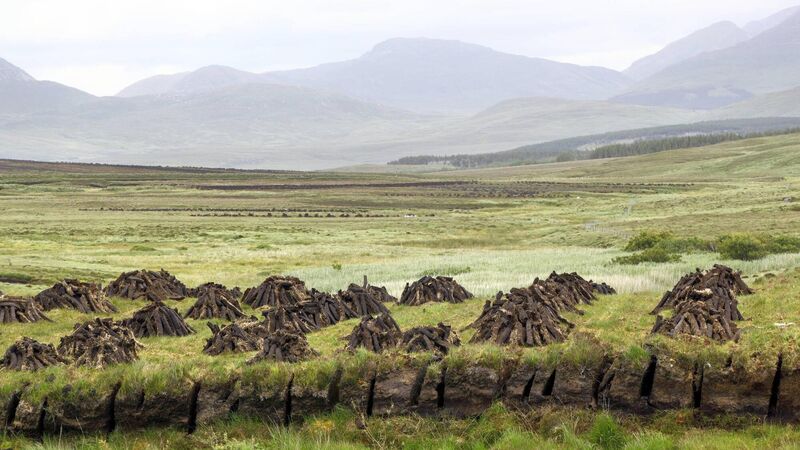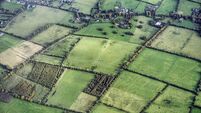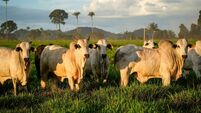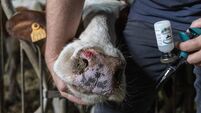Farmer fears over turbary buffer zones

Active turf cutting is still a factor on many commonages.
Placing buffer zones around active turbary areas will result in reduced payments to farmers under a flagship environmental scheme, the Irish Natura and Hill Farmers Association has claimed.
The issue was also raised in the Dáil where Agriculture, Food and Marine Minister Charlie McConalogue said the move will not have a significant overall impact on payments received by commonage shareholders, although there might be some exceptions.
But the INHFA vice president John Joe Fitzgerald claimed in a statement that the proposals, if applied, will have a major impact on the overall habitat score of these commonages that will see reduced ACRES payments to farmers.
He said active turf cutting is still a factor io many commonages. The issue was outlined last year prior to the habitat assessment (scoring) of this land.
Mr Fitzgerald said an understanding was reached that allowed for the areas where turf was being cut to be separated from the overall area and scored separately.
Through these and subsequent discussions, there was no reference to buffer zones and neither do they feature as part of the terms and conditions of the scheme.
While the solution (scoring these areas separately) wasn’t ideal, it did protect the wider area of commonages where turf cutting was still ongoing.
At a time when farmers were expecting payments to issue, he said it was unacceptable that farmers could take a major financial hit over factors that are in most instances outside their control.
“Many people that are cutting turf on commonages may not even be farmers, but as they have a legal turbary right there is nothing any farmer on that commonage can do to stop them,” he said.
Mr Fitzgerald said turbary plots often spread across the commonage so when a buffer zone of 100m is applied there is a real danger that substantial parts of these will get a negative habitat score which will undermine the overall score and payment rates.
Deputy Claire Kerrane asked Minister McConalogue in the Dail to provide an update on his review of the proposal.
The Minister said the objective of the €1.5 billion ACRES scheme is to improve environmental performance on farmland, including commonage.
In this context, the Department is obliged to ensure that the scheme meets its objectives and that applicants are treated fairly when it comes to scoring of environmental performance.
The original proposal in relation to the scoring of turbary areas was to have it applied and included in a single score for the entire commonage parcel.
Before any scoring of commonages took place, farm representatives brought their concerns to him that this could disproportionately impact on the score of an overall commonage parcel.
“Against this background, the Department, in conjunction with the ACRES Co-operation Project (CP) teams, put a protocol in place that mitigated the negative impact that turbary would have on commonage scores.
Minister McConalogue said the protocol provides that areas of active turf cutting, together with appropriate buffer area, are scored separately to areas of peatlands without turbary.
The blending of these separate scores limits the potential impact of turbary on the relevant commonage parcel score, he said.
Minister McConalogue said the buffer area was applied to take account of the negative impact of active turbary on adjacent peatland hydrology.
Without this zone, the environmental integrity of the scheme, and therefore the justification for substantial EU and national funding, would be undermined.
“The buffer area is included in the turbary field but is not itself differentiated from the active turbary area.
“In addition, the buffer area will often incorporate adjoining areas of turbary activity where a mosaic pattern of activity is evident on the relevant commonage parcel.
“This again helps to mitigate the impact of the turbary area on the commonage parcel score, “he said.
The Minister said it is also very important to note that a farmer's payment under ACRES is made up of several different elements in addition to the scoring of commonage lands.
Recently farmer representatives raised concerns with him about how the protocol applied to the turbary areas will affect the overall commonage parcel scores.
“While it is difficult to be definitive at this point because the processing of the relevant data, the Department’s judgement is that this system will not have a significant overall impact on the payments received by commonage shareholders, although there may be some exceptions.
“Overall, the objective of the approach taken has been to strike a reasonable balance between the need to protect the environmental integrity of the scheme, meet European objectives in relation to the CAP Strategic Plan, and ensure that commonage owners are treated in a fair and proportionate way for effective environmental action,” he said.













